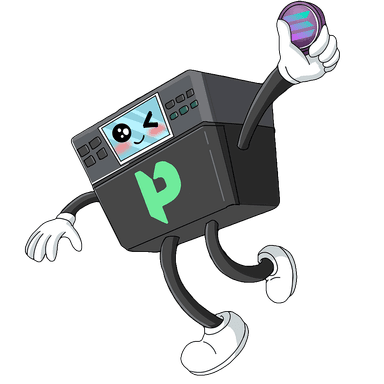Liquidity Curve Configuration
The liquidity curve is one of the most important aspects of your token's configuration. It determines how your token's price changes as people buy and sell, and it plays a crucial role in your token's long-term success.
PrintFun gives you powerful tools to customize your token's liquidity curve to match your specific goals and tokenomics.
Key Curve Parameters
Target SOL
The amount of SOL required to fill the bonding curve and trigger migration to Meteora's DAMM. Each token has its own specific Target SOL value based on its configuration.
Considerations:
- • Higher Target SOL: More stable price, longer time to migrate
- • Lower Target SOL: Faster migration, potentially more volatility
- • Typical Range: 25-100 SOL for most tokens
Initial Price
The starting price of your token when it's first launched on the bonding curve.
Considerations:
- • Higher Initial Price: Less price appreciation potential, more stability
- • Lower Initial Price: More price appreciation potential, rewards early adopters
- • Typical Range: 0.00001-0.001 SOL per token
How These Parameters Work Together
The Target SOL and Initial Price parameters work together to define your token's price curve. Here's a simplified explanation:
Steeper Curve
- • Lower Target SOL + Higher Initial Price
- • Price rises quickly with small purchases
- • More volatile price action
- • Faster path to migration
Good for: Short-term projects, limited supply tokens
Flatter Curve
- • Higher Target SOL + Lower Initial Price
- • Price rises more gradually
- • More stable price action
- • Longer path to migration
Good for: Long-term projects, community tokens
Steeper Curve: Price rises quickly with small purchases
Flatter Curve: Price rises more gradually over time
The ideal configuration depends on your token's goals, community size, and expected trading volume. PrintFun's interface makes it easy to visualize how these parameters will affect your token's price curve.
Recommended Configurations
Community Token
- • Target SOL: 50-100 SOL
- • Initial Price: Very low
- • Fee Tier: Standard (2%)
- • Migration: DAMMv1
Optimized for community growth and long-term holder rewards. The flatter curve gives early supporters a chance to accumulate at reasonable prices.
Project Token
- • Target SOL: 25-50 SOL
- • Initial Price: Medium
- • Fee Tier: High (4%)
- • Migration: DAMMv2
Balanced approach for project tokens that need to fund development. Higher fees generate more rewards for holders and protocol revenue.
Meme Token
- • Target SOL: 10-25 SOL
- • Initial Price: Very low
- • Fee Tier: Premium (6%)
- • Migration: DAMMv1
Fast-paced configuration for meme tokens. Lower Target SOL means quicker migration, while high fees reward holders during volatile trading.
Migration Options and Fee Distribution
When configuring your token's curve, you'll also need to choose a migration option that affects how holders receive rewards after migration:
DAMMv1
With DAMMv1 migration, holders receive their trading fee rewards split between:
- • Part in SOL (quote token)
- • Part in the native token
Ideal for projects that want to maintain token velocity and provide diverse rewards to holders. Fees are collected and distributed in both SOL and the native token.
DAMMv2
With DAMMv2 migration, holders receive 100% of their trading fee rewards in:
- • SOL only (quote token)
Preferred for projects focused on maximizing SOL rewards for holders and simplifying the reward structure. Fees are collected and distributed exclusively in SOL, providing immediate value to token holders.
Best Practices
- ✅
Consider your community size
Larger communities may benefit from higher Target SOL to ensure sufficient liquidity for all participants.
- ✅
Balance initial price and growth potential
Setting the initial price too high can limit early adoption, while setting it too low might attract speculators rather than genuine community members.
- ✅
Choose fee tiers based on expected trading volume
Higher fee tiers generate more rewards but may discourage frequent trading. Lower fee tiers encourage volume but generate fewer rewards per trade.
- ✅
Test different configurations
Use PrintFun's interface to visualize how different parameters affect your token's price curve before launching.
- ✅
Consider your long-term goals
Choose DAMMv1 if you want to maintain token velocity and provide diverse rewards. Choose DAMMv2 if you want to maximize SOL rewards for holders.
